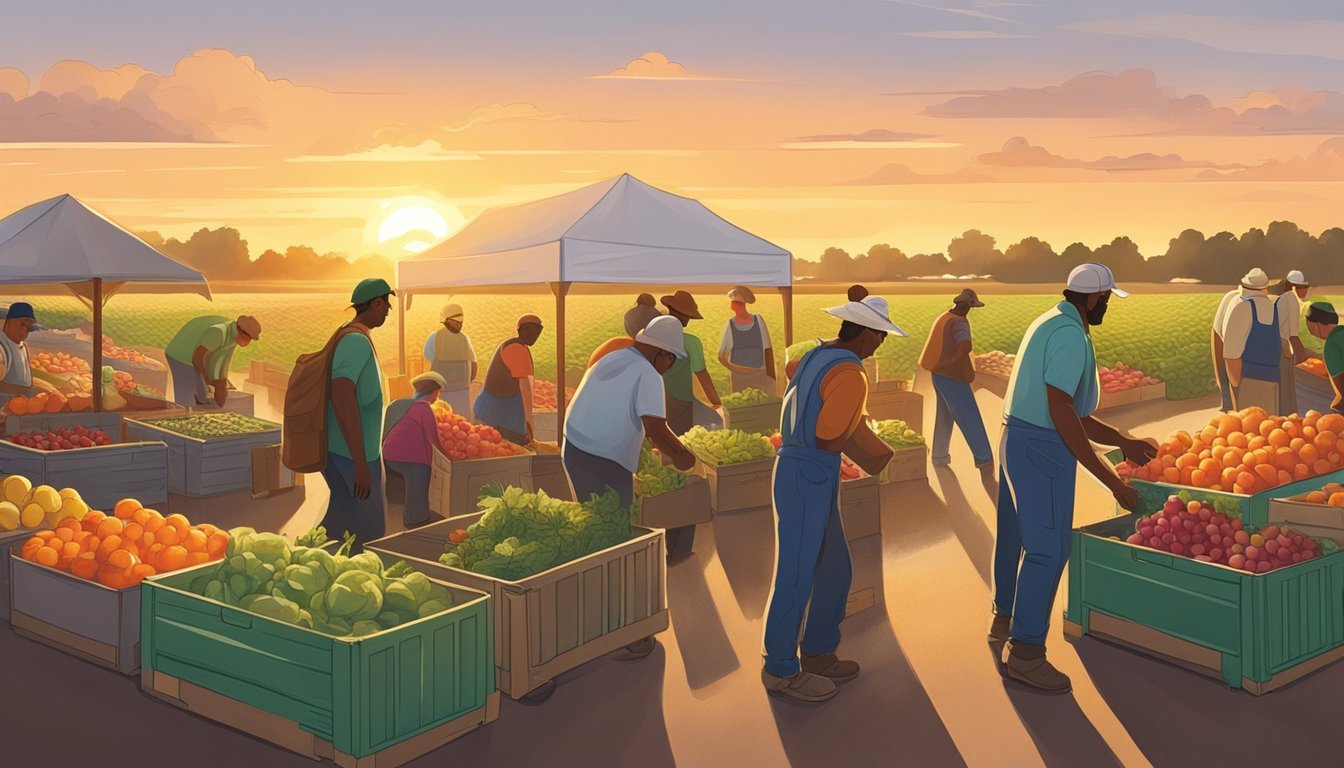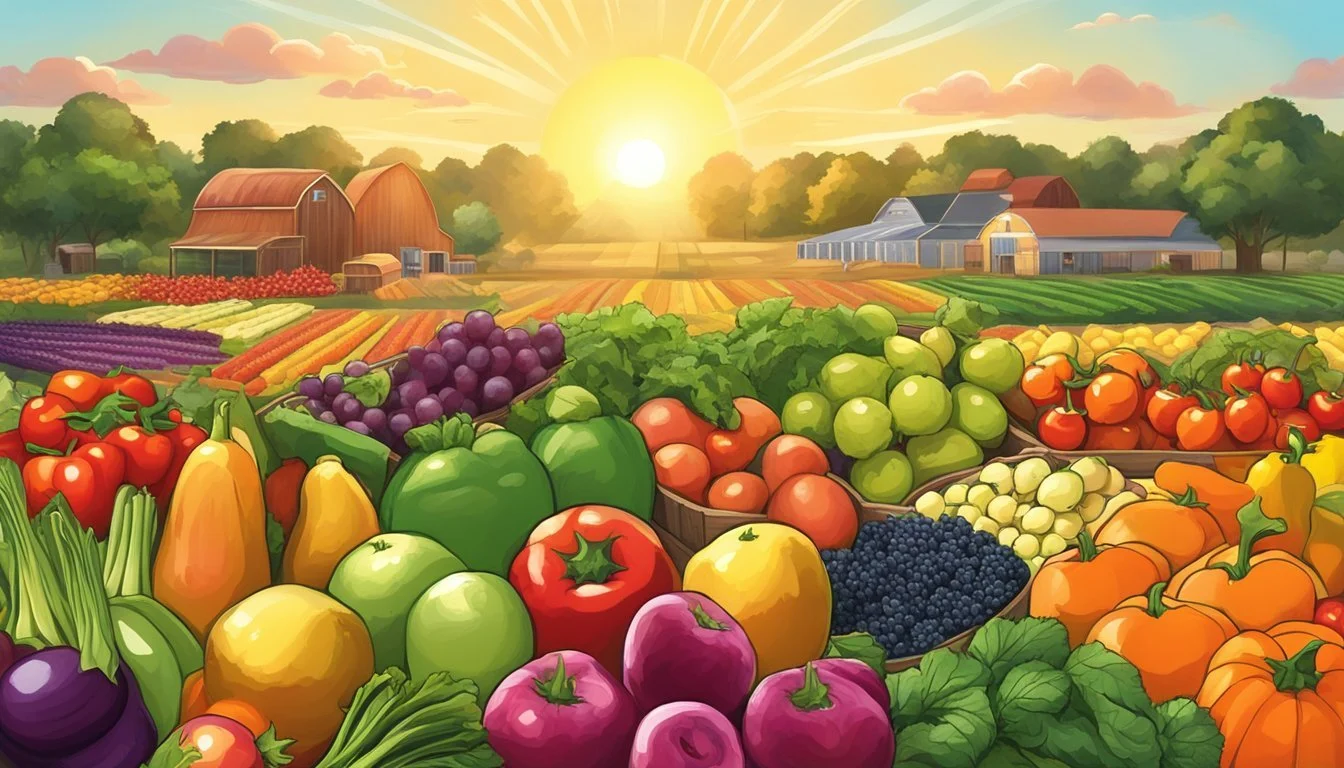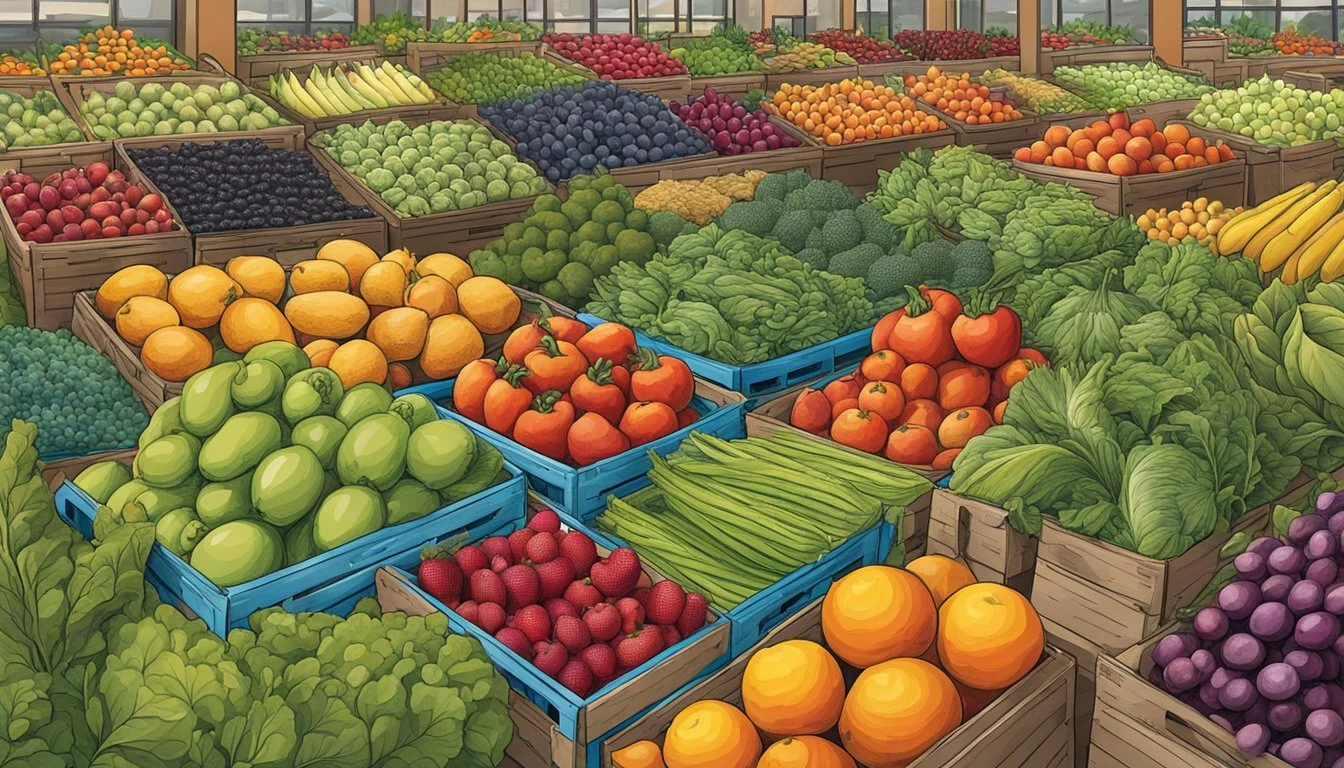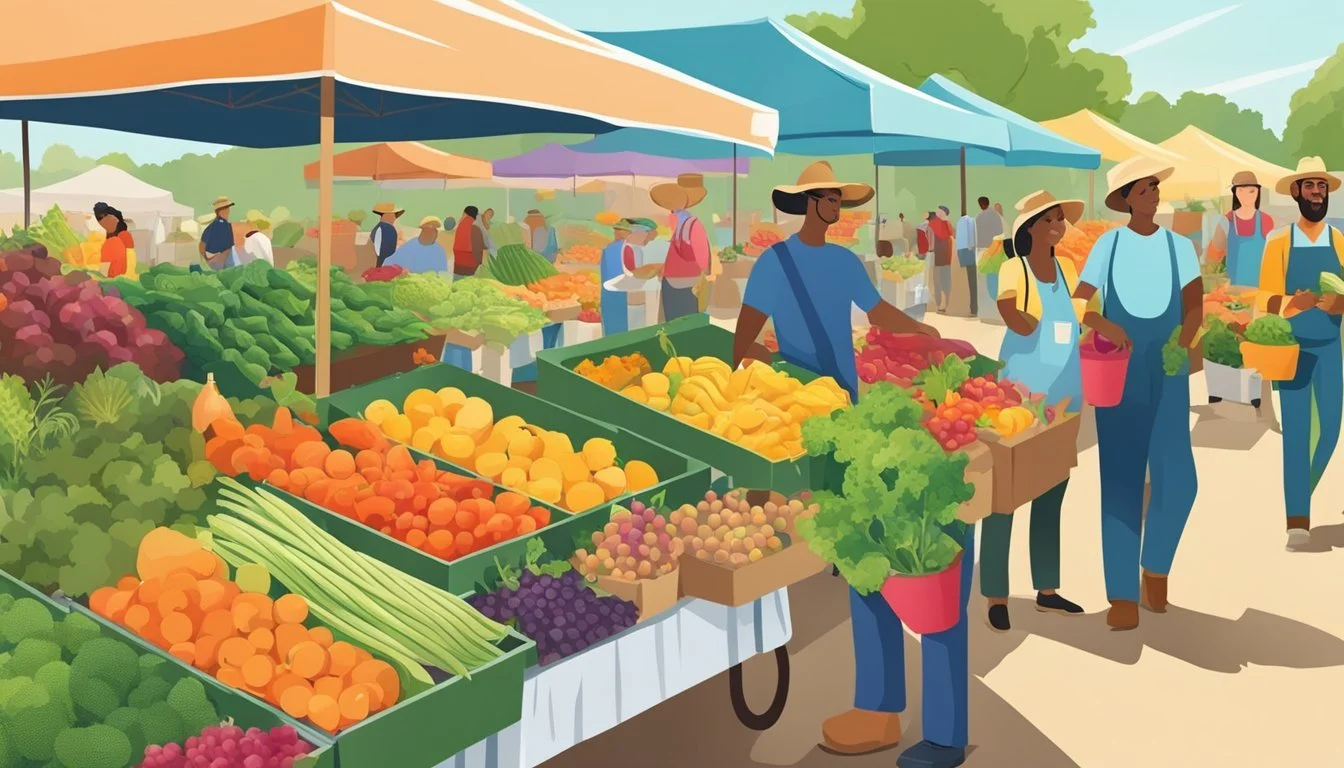Community Supported Agriculture in Texas
Sustaining Local Farms and Consumers
Community Supported Agriculture, or CSA, has taken root in Texas as an innovative model for connecting consumers with their local food producers. This system allows individuals to directly support farmers by purchasing a share of the harvest, typically delivered through weekly boxes filled with an assortment of fresh, in-season produce and, sometimes, other farm products. This structure not only provides a stable financial base for farmers but also introduces consumers to the freshest local foods available—and it fosters a stronger community bond.
In Texas, a state known for its vast agricultural diversity, CSA programs offer a robust variety of options, including fruits, vegetables, meats, and even dairy products. Local food businesses in Texas have embraced the CSA model, tailoring their programs to the needs and preferences of their members. This flexibility ensures that the CSA model in Texas effectively serves both its agriculture community and the consumers that partake in it. The relationship built through a CSA creates a shared commitment to sustainable practices and economic support, reflecting the community's investment in local farming.
The practice of CSA in Texas is indicative of a broader national movement toward sustainable agriculture and conscious consumerism. With this partnership, Texas farmers can focus on land stewardship and high-quality production, knowing they have a guaranteed market for their crops. In turn, Texans benefit from nutritious, flavorful food that travels a short distance from farm to table, reducing food miles and the accompanying carbon footprint.
What Is Community Supported Agriculture (CSA)?
Community Supported Agriculture (CSA) is a cooperative arrangement between consumers and local farms where members buy shares of a farm's harvest in advance. This partnership involves a commitment of support from the community, ensuring a direct link between the production and consumption of food.
CSA Model Principles
The CSA model operates on a foundation of mutual support and shared risk. At the core of CSA is the understanding that members pay for an entire season of produce upfront, which provides the farmer with predictable income and resources to manage their farm operations. Members receive periodic distributions of locally grown produce, capturing the essence of what seasonal eating entails. This symbiosis fosters a community around agriculture that's more resilient and interconnected.
The Role of CSA in Modern Agriculture
Within modern agriculture, CSAs act as a counterbalance to industrial farming practices by promoting local, sustainable operations. By reducing the distance food travels from farm to consumer, CSAs minimize the carbon footprint and support local economies. This model has given rise to a form of distribution that is not only environmentally conscious but also allows farmers to focus on quality and sustainable practices, rather than yield alone.
CSA Benefits for Consumers and Farmers
Consumers benefit from a CSA by gaining access to fresh, seasonal food while also having the transparency of knowing where and how their food is produced. Furthermore, they often have the opportunity to engage with the farming process through farm visits and events. For farmers, the model provides financial security through membership fees that cover their operational costs upfront. This enables them to plan ahead for the season's production and potentially invest in improvements without the pressure of market fluctuations.
History of CSA in Texas
Community Supported Agriculture (CSA) in Texas has its roots tracing back to European origins before taking a unique shape in the Lone Star State. This section explores the early days of the CSA in Texas and how it has grown alongside the national movement.
Early Beginnings and European Influence
The CSA model was inspired by agricultural practices in Europe and Japan during the 1960s, but it wasn't until several decades later that this initiative took root in Texas soil. Katie and David Pitre launched the first CSA in Texas in 1994 with their Tecolote Farm in Manor, influenced by the European concept and the emergent American CSA movement.
Growth of CSA in the United States
Before Texas joined the CSA wave, the United States witnessed the establishment of its first CSAs in 1986, with the founding of Indian Line CSA in South Egremont, Massachusetts, and Temple-Wilton Community Farm in Wilton, New Hampshire. These developments happened shortly after the European model was introduced in the country. As of the information contained in the search results, Texas today boasts nearly 600 CSAs, weaving the CSA model firmly into the state's agricultural fabric.
How CSA Works
Community Supported Agriculture (CSA) in Texas revolves around a partnership between local farmers and community members who wish to receive regular, seasonal produce. When a member subscribes, they typically receive a share of the harvest throughout the growing season, fostering a direct connection between the producer and the consumer.
Membership and Subscriptions
To partake in a CSA, individuals must purchase a membership or subscribe to a program. Memberships are often acquired on a seasonal or annual basis, and the cost generally reflects the anticipated yield and variety of produce the farm can deliver. In some cases, subscriptions may be paid upfront or through regular monthly or quarterly payments. This financial support helps farms cover the initial operational costs of the season.
Seasonal Harvest and Share Distribution
Throughout the CSA season, which in Texas commonly ranges from May to October, members receive a share of the harvest. These shares typically include an assortment of vegetables, fruits, herbs, and occasionally, additional products such as eggs or honey. The content of each share is based on what is currently in season and abundant on the farm. Distribution methods vary, with some CSAs offering delivery and others having designated pick-up locations. Members get to enjoy the benefits of fresh, locally-sourced produce regularly through these structured distributions.
Benefits of Joining a CSA
Joining a Community Supported Agriculture (CSA) program in Texas provides tangible advantages, from the quality of produce members receive to the broader impacts on the local community and environment.
Fresh, Seasonal Produce
Members of a CSA enjoy fresh, seasonal produce that is typically harvested within 24 hours of pickup or delivery, ensuring optimal flavor and nutritional value. The offerings change throughout the year, reflecting the seasonal nature of farming and providing a variety of fruits and vegetables at their peak.
Supporting Local Economy and Agriculture
By participating in a CSA, individuals directly support local farmers and contribute to the local economy. This model provides farmers with a dependable income source, allowing them to focus on sustainable farming practices without the financial uncertainties of market fluctuations.
Environmental Advantages
CSAs promote environmental sustainability through reduced food mileage and minimal packaging. By sourcing food locally, members help to cut down on carbon emissions associated with long-distance transportation. Furthermore, most CSA farms employ environment-friendly practices, such as organic farming, which has less impact on the ecosystem.
Challenges and Considerations in CSA
Community Supported Agriculture in Texas, while offering numerous benefits, presents distinct challenges related to the inherent unpredictability of farming and the obligations inherent in membership.
Shared Risk and Crop Variability
One of the foundational concepts of CSA is the sharing of risk between the farmer and the members. In Texas's varied climate, weather can be unpredictable, leading to crop variability. This means that the quantity and type of produce available can significantly fluctuate from season to season. CSA members typically purchase shares at the start of the growing season, which are essentially investments in the farm's production. When adverse weather affects the harvest, it impacts the yield and therefore the diversity and volume of produce shareholders receive.
Risk Considerations:
Weather patterns (drought, storms, excessive rainfall)
Pests and diseases affecting crops
Potential for lower yield than expected
Understanding CSA Membership Commitments
Committing to a CSA involves understanding that members are purchasing a potential outcome of harvest, not a guaranteed selection of goods. CSA members need to be clear on what being a shareholder means. It involves a degree of trust and a willingness to support the community and farming effort, regardless of the uncertainty in production. They must accept that they may not always receive the full anticipated value of their shares due to factors beyond the control of the farmers.
Membership Commitment Insights:
Members support farmers upfront and share the risk of crop production.
There is an expectation to remain committed throughout the season, accepting the ebb and flow of produce availability.
Understanding the CSA model is crucial; education on this model often falls to the farmers and CSA organizers, who must communicate clearly to set accurate expectations for members.
Types of Products Offered in CSA Programs
Community Supported Agriculture programs in Texas offer a diverse array of farm products. These programs are crucial for supporting local agriculture and providing community members with fresh, locally-produced items.
Range of Vegetables and Fruits
CSA programs in Texas boast a wide variety of vegetables and fruits. The selection typically includes but is not limited to:
Vegetables: tomatoes, peppers, cucumbers, onions, carrots, and leafy greens
Fruits: watermelons, peaches, apples, pears, and berries
Members can expect seasonal availability, receiving crisp produce specific to the time of year.
Beyond Produce: Meats, Eggs, and Dairy
Besides produce, many Texas CSA programs offer meat, eggs, and dairy products. Consumers can often find:
Meat: grass-fed beef, pasture-raised pork, and free-range chicken
Eggs: from hens raised on a natural diet without the use of hormones
Dairy: fresh milk, cheese, and yogurt from local dairy farms
These products are valued for their freshness and higher quality compared to typical grocery store offerings.
Organic and Specialty Crops
For those interested in organic farming practices, Texas CSAs provide an assortment of organic fruits and vegetables, certified to have been grown without synthetic pesticides or fertilizers. Specialty crops, including heirloom varieties and exotic types not commonly found in supermarkets, are also featured in some CSA programs, catering to diverse tastes and culinary exploration.
CSA Operations in Texas
In Texas, Community Supported Agriculture has rooted itself as a vital part of the local food movement, providing residents with direct access to high-quality, seasonal produce, and other farm products directly from the farms.
Profiles of Notable Texas CSA Farms
Legacy Farms, situated near Austin, is renowned for its flavorful mixed boxes of produce, a staple in CSA boxes in Central Texas. Subscribers to their CSA program enjoy a cornucopia of fresh, well-priced products, and they offer additional options for local pick up at the Legacy Farmers Market.
Another prominent farm, Greensleeves Farm, based in Manor, offers a selection of vegetables, fruits, and herbs. They embody the diverse range of goods available through CSAs in Texas, sometimes extending their offerings to include items like eggs and meat through partnerships with neighboring farms.
Distribution: Pickup Locations and Home Delivery
CSAs in Texas have adapted to offer convenient distribution methods. Pickup locations are generally available at farmers markets or specified locations within communities. For example, many CSAs in the Austin area distribute their fresh produce at local farmers markets or designated neighborhood spots.
Home delivery services have gained popularity, catering to the convenience that consumers seek. Farms like those centered in Elgin provide doorstep deliveries, ensuring that the freshest products reach their subscribers with ease, capturing the essence of farm-to-table without the need for subscribers to leave their home.
Seasonality in Texas and CSA Schedules
CSA schedules in Texas are inherently linked to the state's growing seasons. The typical CSA box content shifts throughout the year, from spring vegetables like leafy greens to summer fruits, and continues to evolve into late fall and winter with robust root crops.
Central Texas farms, due to their regional climate, have the ability to offer an extended growing season. This allows for a variety of produce to be available to CSA members for a longer duration compared to other regions, ensuring a steady supply of fresh, seasonal food throughout much of the year.
Marketing and Promoting CSA Farms
Marketing and promoting CSA farms in Texas centers on strategic outreach and strengthening consumer relationships. This section delves into the effectiveness of farmers markets, digital platforms, and community engagement in championing CSA models.
Role of Farmers Markets in CSA Outreach
Farmers markets act as pivotal platforms for CSA farmers to directly connect with consumers. They serve not only as points of sale but also as interactive spaces for education about the CSA model. Here, farmers have the opportunity to:
Showcase fresh, in-season produce to potential CSA members.
Engage in face-to-face conversations, fostering trust and community ties.
Digital Marketing Strategies
Digital marketing tools are indispensable for CSA farmers in Texas to reach a broader audience. To leverage these tools effectively, farms might:
Maintain an updated, user-friendly website highlighting CSA membership benefits.
Utilize social media networks like Facebook, Instagram, and Twitter to share harvest updates, testimonials, and special events.
Email marketing campaigns can keep existing and potential members informed and engaged throughout the season.
Community Engagement and Education
CSA farms thrive on strong community relationships and an informed consumer base. Community engagement and education can involve:
Hosting farm tours and open houses to immerse consumers in the CSA experience.
Partnering with local schools and organizations to raise awareness about the benefits of supporting local agriculture through CSA programs.
Providing clear, informative materials that explain CSA membership details, seasonal availability, and the impact on local food systems.
By focusing on these targeted strategies, CSA farms can foster sustainable growth and a more resilient local food economy.
The Future of CSA in Texas
The future of Community Supported Agriculture in Texas points towards stronger adoption of innovative practices and resilience in the face of economic and health crises.
Innovation and Sustainability in Farming
Texas farmers are increasingly adopting sustainable practices that are not only environmentally friendly but also economically viable. They are experimenting with new technologies to optimize water usage and soil health, which is crucial for the state's diverse and sometimes arid climate. Precision agriculture, utilizing data analytics to predict weather patterns and crop yields, is on the rise. Solar-powered irrigation and drone monitoring are also becoming more common in Texan CSAs, signaling a shift towards more sustainable and innovative farming methods.
CSA's Response to Economic and Pandemic Challenges
The viability of CSAs in Texas has been tested by the pandemic, yet they have shown resilience and adaptability. During economic downturns and health crises, CSA programs provided stable income for farmers while ensuring fresh produce for members. This situation highlighted the importance of local food systems and has likely secured future CSA growth. Farms have adapted by adding contactless delivery options and expanding their product range to include not just vegetables, but also fruits, meats, and dairy. In response to recent challenges, Texans have supported their local farms, reinforcing the economic foundation of these vital community resources.
Resources for CSA Members and Farmers
Community Supported Agriculture (CSA) programs in Texas are backed by a variety of resources designed to empower both farmers and members. From networking and support organizations aiding in the sharing of knowledge, to educational materials and opportunities for financial support, Texas is ripe with options for those involved in the CSA system.
Networking and Support Organizations
CSA Innovation Network serves as a hub for individuals and organizations to exchange ideas. It emphasizes the value of CSAs to consumers and fosters community among farmers and members. For those in Texas, regional organizations offer localized support tailored to the state's unique agricultural landscape.
Educational Material and Workshops
Farmers and members in Texas can enhance their CSA experience through an array of educational resources. The Legally Resilient Community Supported Agriculture Program Guide provides an in-depth overview of managing a CSA, including legalities, risk-sharing, and food safety. Workshops, offered by various local food organizations, delve into practical topics that help both novice and experienced participants thrive.
Grants and Funding Opportunities
Grants and other funding opportunities are available to Texas CSA farmers seeking to expand or sustain their operations. Sources of such funding can be found through the U.S. Department of Agriculture and state-specific agricultural programs. These financial resources ensure that CSA models continue to flourish, supporting local economies and providing fresh produce to community members.











